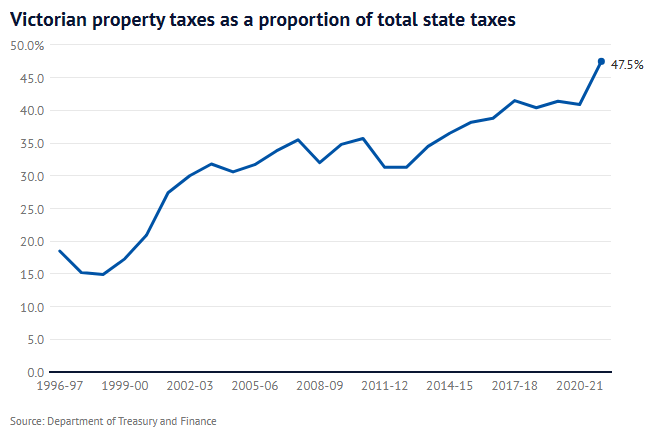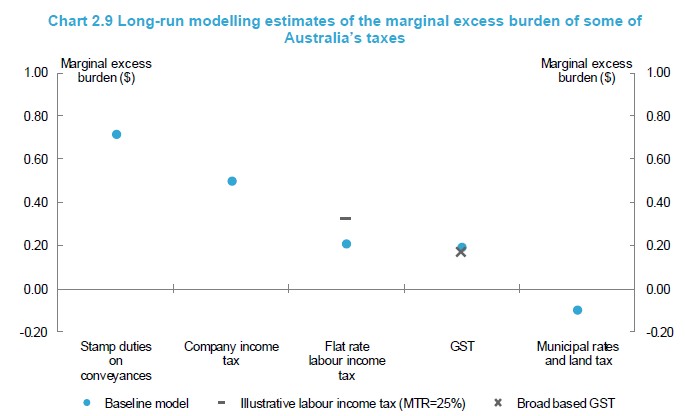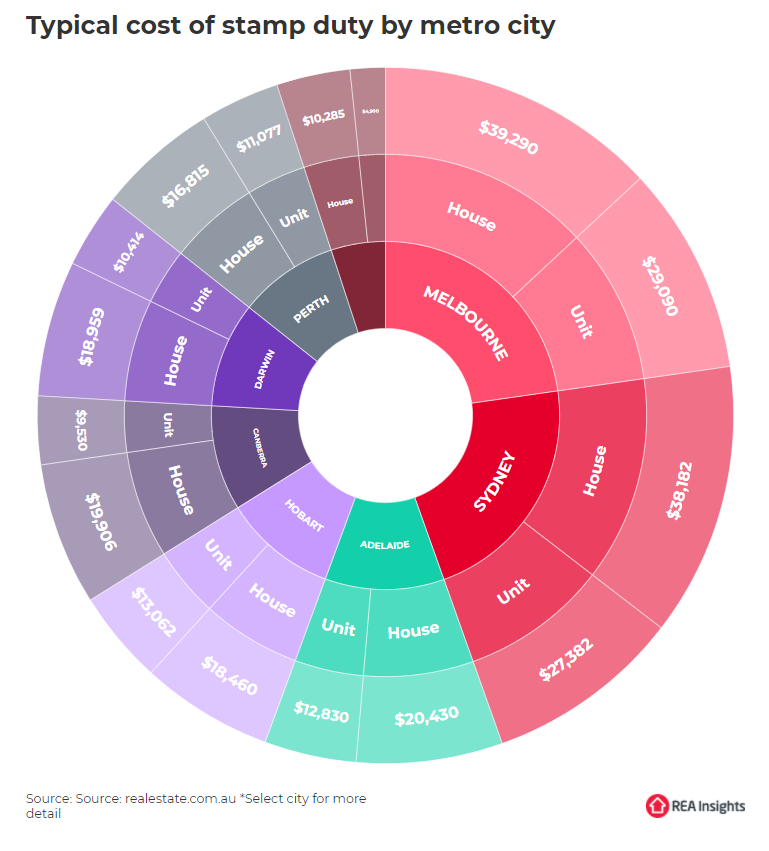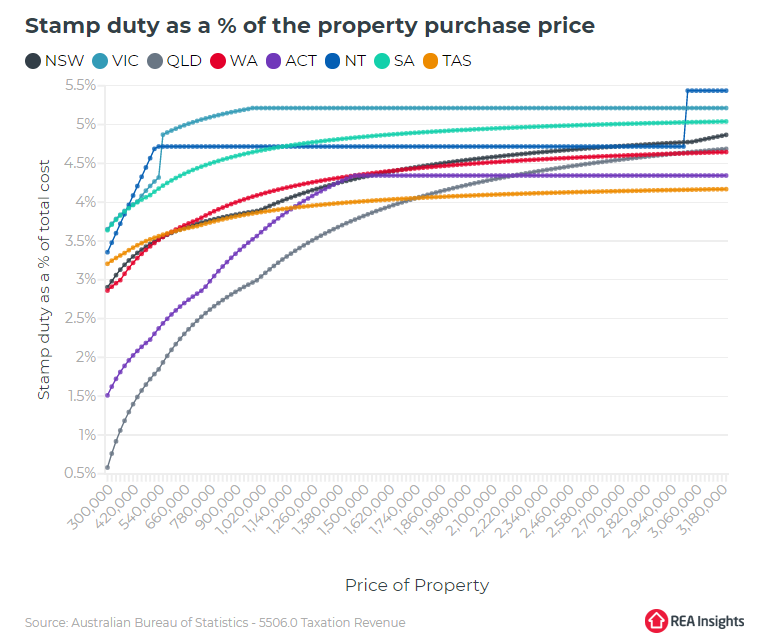In 2021, I attacked the Victorian Government for lifting stamp duty on property transactions above $2 million.
Under this change, stamp duty increased to $110,000 plus 6.5% for every dollar above $2 million. This was up from the 5.5% rate that previously applied to all properties valued over $960,000.
Victoria’s stamp duty tax grab is that it pulls in the opposite direction from the reforms announced last year by the NSW Government, which phase-out inefficient stamp duties in favour of broad-based land taxes.
Victoria was already the most dependent on property stamp duties and has now stupidly increased its dependence on the nation’s least efficient tax:
Stamp duty is regarded as a major contributor to Victoria’s housing affordability crisis, while it discourages people to move house.
The Victorian government collected some $10.4 billion in stamp duty revenue in 2021-22, which equated to about 33.9% of the state’s total tax take.
However, the Department of Treasury and Finance estimated that stamp duty revenue will average $8.4 billion annually over the next four years, down about 19% from the record stamp duty haul in 2021-22.

Victorian budget overly reliant on property taxes.
Thankfully, the Treasury is said to be considering an overhaul of the stamp duty system, including giving home buyers the option of paying an annual land tax instead, similar to what was implemented in NSW under the former Perrottet Government.
“A key concern in Victoria is that revenue lost in moving away from stamp duty towards a more stable revenue source from land taxes could leave a multibillion dollar hole in the budget at a particularly tight time for the state’s finances”, writes The Age.
“One view is that any reforms should be tackled at the national cabinet level – potentially through the National Housing Accord – because any state reforms would have broader productivity benefits for the national economy”.
The federal government collects around 80% of the nation’s tax revenues, with states and local governments collecting the remainder through a narrow base of levies such as stamp duties.
Given the elimination of inefficient stamp duties in favour of land taxes would result in significant productivity gains for the national economy, and that the federal government would monetise these gains through an increase in personal income and corporate tax receipts, the federal government should facilitate the reform process through incentive payments to states.
This would allow state governments to share in the revenue boost that would result from the subsequent increase in overall productivity.
This is how ‘cooperative federalism’ should function, with the federal and state governments sharing the benefits of productivity enhancing reform.
Treasurer Jim Chalmers spent a lot of effort in the run-up to the election promoting productivity reform. It is now time for him to put up.
Without the federal government’s active participation in the tax reform process, critical productivity-boosting changes like replacing stamp duties with land taxes will remain in the ‘too hard’ box.




